Negin Entezari
Identifying Misinformation from Website Screenshots
Feb 15, 2021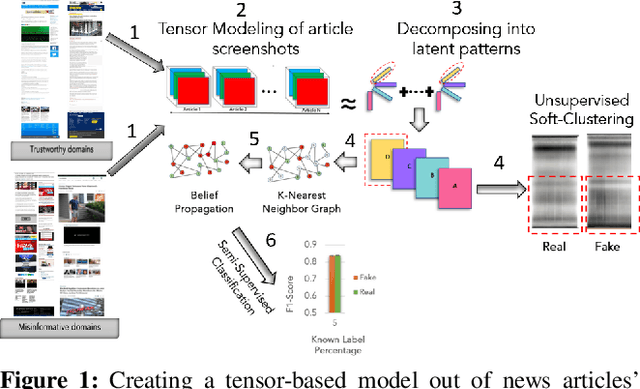


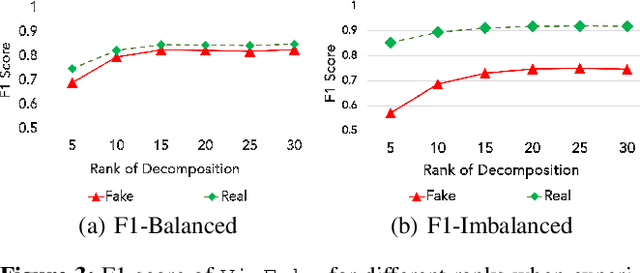
Abstract:Can the look and the feel of a website give information about the trustworthiness of an article? In this paper, we propose to use a promising, yet neglected aspect in detecting the misinformativeness: the overall look of the domain webpage. To capture this overall look, we take screenshots of news articles served by either misinformative or trustworthy web domains and leverage a tensor decomposition based semi-supervised classification technique. The proposed approach i.e., VizFake is insensitive to a number of image transformations such as converting the image to grayscale, vectorizing the image and losing some parts of the screenshots. VizFake leverages a very small amount of known labels, mirroring realistic and practical scenarios, where labels (especially for known misinformative articles), are scarce and quickly become dated. The F1 score of VizFake on a dataset of 50k screenshots of news articles spanning more than 500 domains is roughly 85% using only 5% of ground truth labels. Furthermore, tensor representations of VizFake, obtained in an unsupervised manner, allow for exploratory analysis of the data that provides valuable insights into the problem. Finally, we compare VizFake with deep transfer learning, since it is a very popular black-box approach for image classification and also well-known text text-based methods. VizFake achieves competitive accuracy with deep transfer learning models while being two orders of magnitude faster and not requiring laborious hyper-parameter tuning.
TensorShield: Tensor-based Defense Against Adversarial Attacks on Images
Feb 18, 2020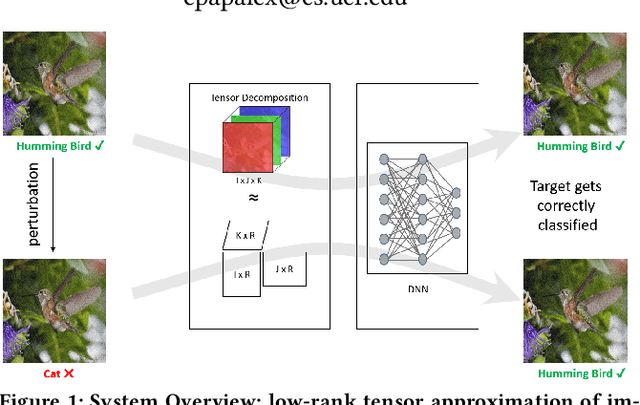
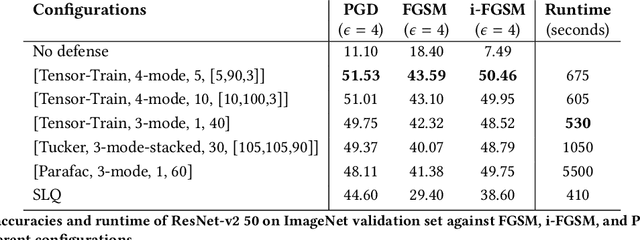

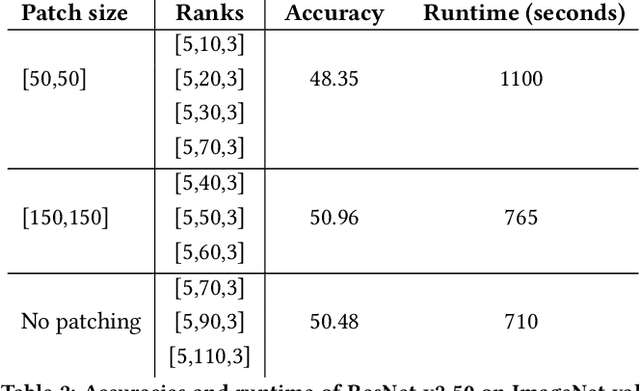
Abstract:Recent studies have demonstrated that machine learning approaches like deep neural networks (DNNs) are easily fooled by adversarial attacks. Subtle and imperceptible perturbations of the data are able to change the result of deep neural networks. Leveraging vulnerable machine learning methods raises many concerns especially in domains where security is an important factor. Therefore, it is crucial to design defense mechanisms against adversarial attacks. For the task of image classification, unnoticeable perturbations mostly occur in the high-frequency spectrum of the image. In this paper, we utilize tensor decomposition techniques as a preprocessing step to find a low-rank approximation of images which can significantly discard high-frequency perturbations. Recently a defense framework called Shield could "vaccinate" Convolutional Neural Networks (CNN) against adversarial examples by performing random-quality JPEG compressions on local patches of images on the ImageNet dataset. Our tensor-based defense mechanism outperforms the SLQ method from Shield by 14% against FastGradient Descent (FGSM) adversarial attacks, while maintaining comparable speed.
 Add to Chrome
Add to Chrome Add to Firefox
Add to Firefox Add to Edge
Add to Edge